Story & Photos by Vicki Andersen
"Hail and well met! What be thy tide?" My senses on overload from the poignant aromas, medley of sounds, kaleidoscope of costumes, and mélange of revelry around me, it took a minute to comprehend that I, a stranger and obvious Traveler at this event, was being warmly greeted and asked my name.
All around me are booths and tents bedecked with gaily colored flags, displaying a wide array of crafted items, decorative and utilitarian, many of whose uses are indecipherable to me. Weaving about the village is an astonishing jumble of folks: wenches and buxom maidens, dashing knights and their squires, monks and clerics, wizards and magicians, gypsies and fairies, guildsmen and barbarians. The air is filled with dialogue that includes "verily" and "mayhap" and "anon".
 |
 |
|
RED KNIGHT
|
FAIRE PARTICIPANTS
|
I have been transported back to the 16th Century and find myself at Faire. In
those days, yearly events were held to celebrate the demise of winter and resurrection
of spring. Farmers presented early crops, crafters hawked their goods, and inn
keepers tempted passersby with their most delectable dishes. On stage or meandering
through the crowds, entertainers performed plays and sang bawdy ballads, juggled
and mimed, danced and otherwise did their utmost to entertain the masses. It
was a gathering of all the Celtic cultures including Scottish, Irish, Welsh
and Cornish.
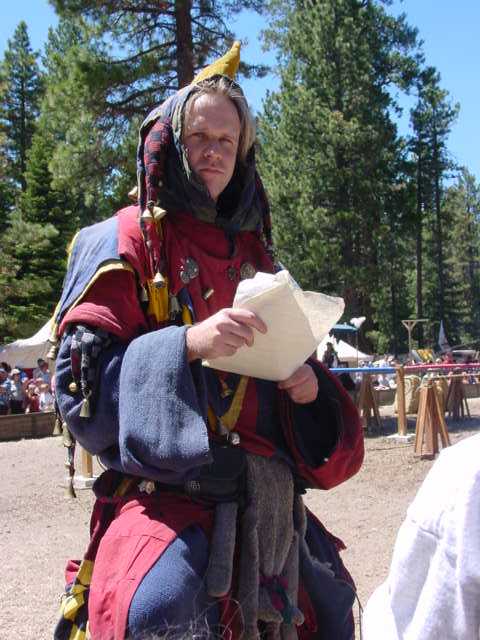 |
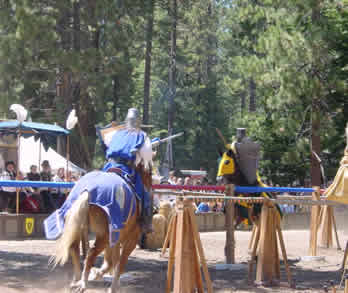 |
 |
|
JESTER
|
JOUSTING
|
SCOTSMAN
|
Today's Renaissance Faire, commonly referred to as Ren Faire or just Faire,
is a fusion of historical reenactment, performance art, and craft exposition.
Some are serious attempts to re-create a particular time or place, peopled with
real characters and events. Others are more fantasy oriented but still overflowing
with pomp and pageantry. These events abound in the United States and other
offspring-countries of Merry Olde England, but can also be found in many unexpected
countries.
Faire participants dress in costume (referred to as garb) appropriate to the period and character they are portraying. You and I are Travelers, a term for a paying customer in reference to our "odd" (21st century) dress. Even the horses recall days of yore as they prance about in their trappers, the fabric covering that bears their knight's coat of arms.
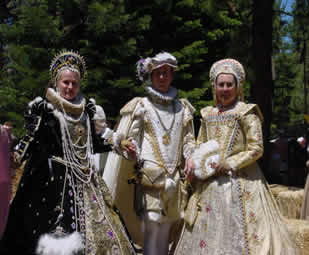 |
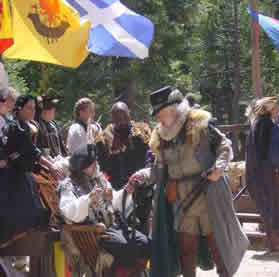 |
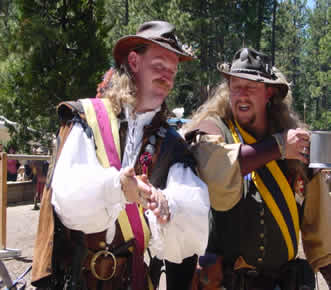 |
|
ROYALTY
|
MAYOR
|
TOURNEY ANNOUNCERS
|
Every Faire includes a Royal Court with all the associated accoutrements of
ceremony and grandeur. Accompanied by gossiping and tittering Ladies in Waiting,
Her Majesty rustles by in a swirl of beads and brocade. His Highness, clad in
velvet and satin, hails the Knights and confers with the village Mayor.
Some of the most exciting action is found at the Tournament Field, where Knights in shining armor conduct full contact jousting, live steel combat melees, equestrian events, and other feats of skill. These "Joust a Plaisir" (Joust for Pleasure) decide the winner based upon points scored in various events, and which sometimes result in shattered lances and dismounted riders.
| "Running at the Rings" challenges the Knight to gallop through a set course while attempting to spear rings suspended from poles, attached to a fence rail, or held by brave squires. He who collects the most rings, wins. (Ring Jousting is the official state sport of Maryland!) In "Quintain Jousting" a post is set into the ground with a revolving arm on top, a shield affixed to one end of the arm and a sandbag to the other. Sir Knight charges full bore at the target, endeavoring to set the arm spinning yet move away fast enough he doesn't get whacked from behind by the sandbag. The number of rotations the revolving arms makes determines the winner. | 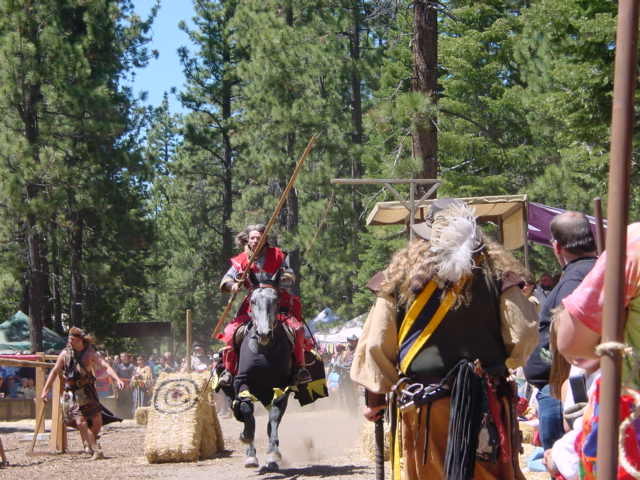 |
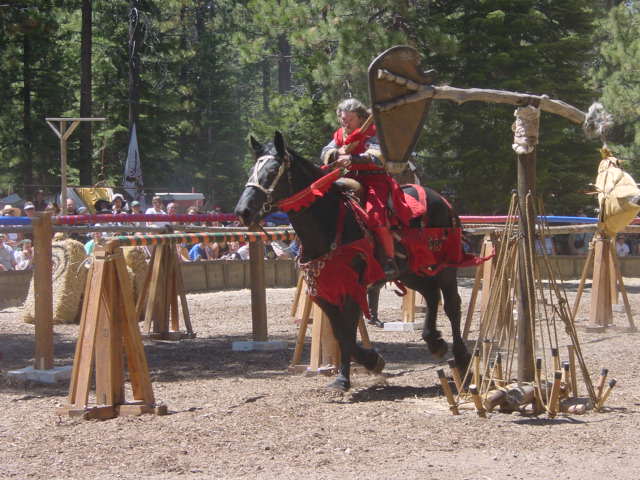 |
|
RUNNING AT THE RINGS
|
QUINTAIN JOUSTING
|
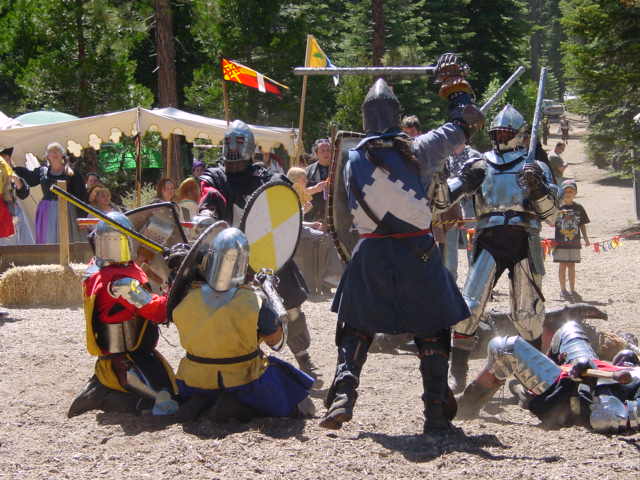 |
 |
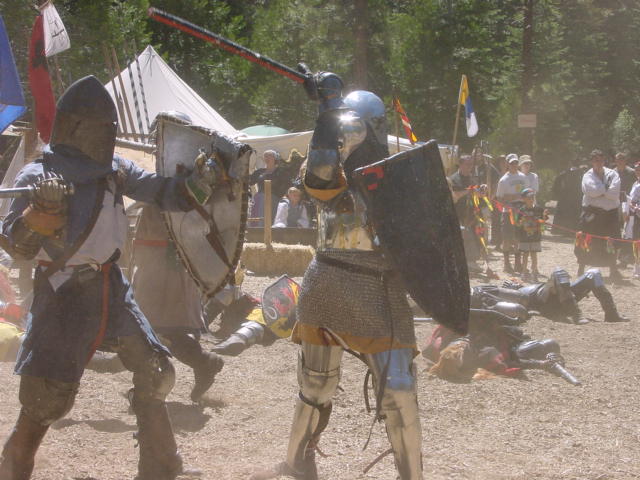 |
|
MELEE-1
|
MELEE-2
|
MELEE-3
|
Steel combat melee pits groups of armored Knights, welding swords, lances, maces
and pitifully small shields, against each other. Tournament of the Horse demonstrates
precise teamwork with the Knight and his horse, maneuvering a complex route
without the use of reins.
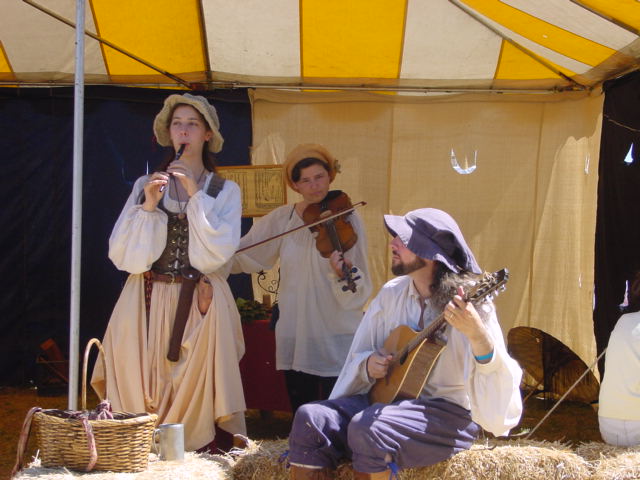 |
Wandering minstrels strum upon mandolins and madrigals while they recite melodious lyrics. You're likely to hear the sounds of harp, lute, hammered dulcimer, bagpipes, pennywhistle, Irish flute and ocarina. Other entertainers take to the stage for Elizabethan-style ad-libbing or zany Shakespearean comedy. The Commedia Dell Arte is strolling theater where each actor assumes the clothing, speech and idiosyncrasies of a real character from the time period, improvising their actions and dialogue as they go. | 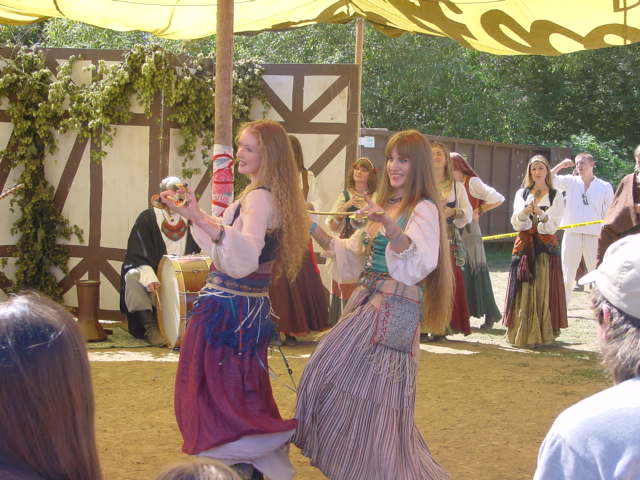 |
|
MUSICIANS
|
DANCERS
|
Faire also provides an arena for a variety of dancers. Celtic and gypsy dancers twirl among the crowd. Decked in brilliant colors, arms and legs adorned with ribbons, lace and bells, Morris Dancers perform to bring luck and prosperity. Thought to have originated from pre-Christian fertility ceremonies, some Morris dances have remain unchanged for hundreds of years. Variations include executing precise figures, clashing sticks, or cavorting in what appears to be wild abandon. At first the belly dancers seem incongruous in this setting, until you remember the Crusaders brought a variety of exotic customs and mysterious people back home with them.
You may also encounter a troupe of Danse Macabre cloaked in skeletal-type costumes symbolizing death. This originated during the time of the plague, with participants hoping their outfits would fool Death into thinking them already departed and pass them over. Their songs and dances celebrate living for today because no one knows what tomorrow may bring.
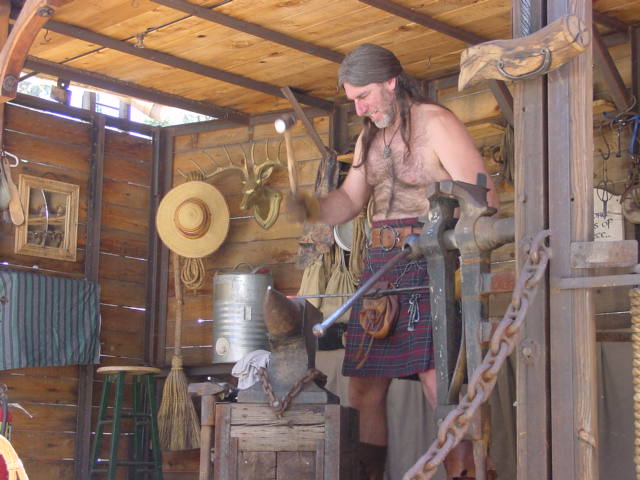 |
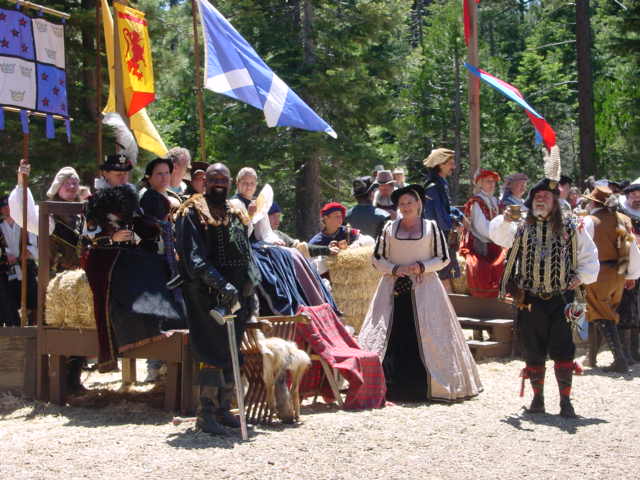 |
Many Faire participants belong to a Guild that reflects a specific social strata, occupation or interest. Having fully researched their character, they are accomplished players whose speech, garb and mannerisms add to the overall ambiance. Many of them perform demonstrations of their craft, and the clamor of a blacksmith's hammer as he labors over his forge seems most appropriate in this place. |
|
BLACKSMITH
|
TOURNAMENT JUDGES
|
Other entertainment often found at Faire includes falconry and birds of prey exhibitions, Punch and Judy shows, and a variety of games and sports such as Castle Siege, Rat Maze, Living Chess Match and archery tournaments. At some Faires you can even participate in a Druid or pagan wedding.
You are not obliged but are encouraged to immerse yourself in the venue and add your merriment to the spectacle. Many Faires have booths where you can rent clothing if you are so inclined, but a few simple things can help anyone feel less a "Traveler" than a participant such as wearing natural fabrics in earth tones, blousy shirts or dresses, leather shoes, and simple jewelry. Snoods and codpieces are optional…
Add a dash of Olde English to your speech: never use one word when two or more will do; add lots of "right" and "well" and "most". The basics of prithee (please); grammarcy (thank you), yea (yes) and naye (no) go a long way in helping you barter with merchants for items such as art, books, calligraphy, ceramics, clothing, coins, heraldry, jewelry, leather goods, musical instruments, perfumes, pewter, swords and armor, toys, utensils, and woodwork.
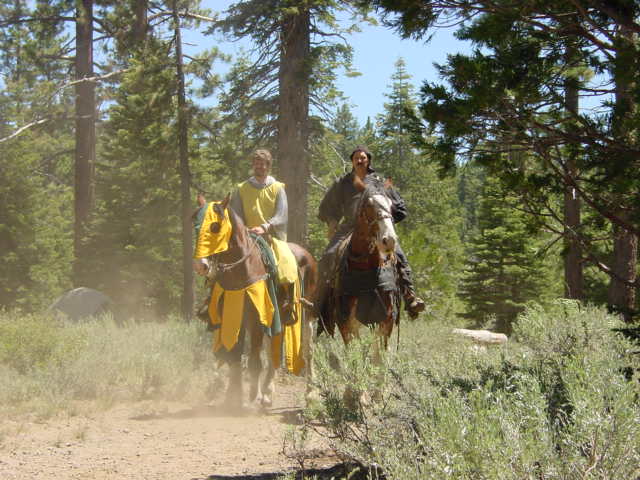 |
 |
|
|
KNIGHTS
|
LANDSKNECHT SOLDIERS
|
Hark! The nicker of horses eager to hit the field; a plume of dust from approaching
Landsknecht German mercenary soldiers; the clanking of chain mail; bagpipes
swirling from deep among the trees: it must be Tournament time again.
Fare thee well, fellow Traveler, I must harken and away!
* * * *
Visit http://www.faires.com for a schedule of upcoming Renaissance Faires including
details such as the number of booths and stages, admission cost, and where to
find more information about that event.